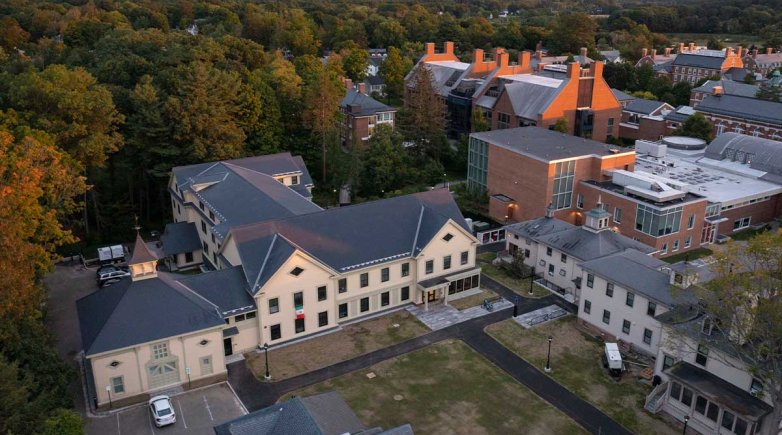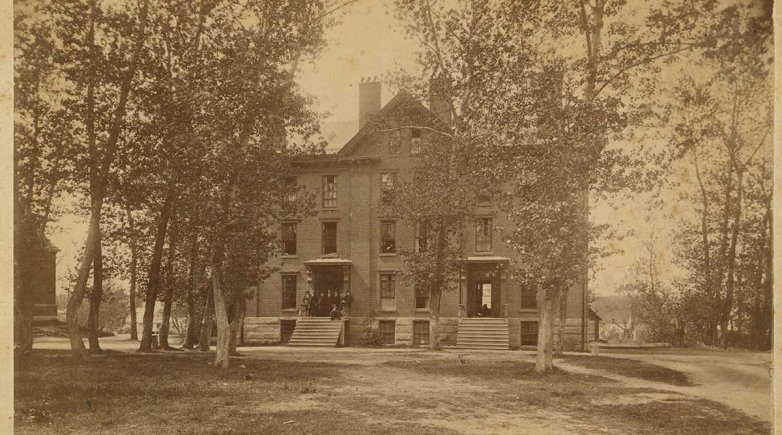Welcome to New Hall
Residential life and academic excellence come together in Exeter's newest dormitory.
New Hall, set upon the foundation of the former Fisher Theater and near the science and music centers, anchors a lively community hub on the western side of campus.
Move-in day falls on a sunny Wednesday in early September. All over campus, welcome signs decorate open dormitory doors and chalk-drawn arrows point the way inside. Students lug crates and drag suitcases along the pathways, taking frequent breaks to hug friends and compare summers.
A bit of extra excitement fills the air, along with the smell of fresh paint, as students and their families make their way down Front Street and enter the newly constructed 42,000-square-foot dormitory, currently known as New Hall. Resident faculty members perched on red Adirondack chairs greet new arrivals as they pass through the window-lined entrance and step tentatively into the dorm’s light-filled common room, where proctors have gathered to answer any questions.
In a third-floor room, Kendra Wang ’25 unpacks while her roommate, Jackie Addo ’25, has most of her belongings neatly arranged on her side of the room. The cozy double is made roomier by built-in wooden desks and shelves set against the window and dressers tucked underneath raised beds. Tackboard covers the wall above each bed, awaiting each student’s personalized array of fairy lights, posters, photographs and other decorations.
New Hall is the first dormitory to be built on Exeter’s campus in more than 50 years. If that isn’t significant enough, the sustainably constructed building also houses an academic space with four Harkness classrooms, bringing living and learning at Exeter together under one roof for the first time. With its opening this fall, New Hall has created a vibrant community hub on the western edge of campus, furthering the school’s vision of residential life as an essential part of the Exeter experience.


